Table of Contents
SIKKIM
Sikkim tourism offers a captivating blend of breathtaking Himalayan scenery, vibrant culture, serene monasteries, and exciting adventures, making it a paradise for travelers and nature lovers.
A mountain state in the Indian Himalayas and the former Himalayan Kingdom situated between Nepal in the West, Bhutan in the East, and Tibet/China in the North. Sikkim with its rich bio-diversity has 180 lakes ranging in altitude from 200 meters to almost in the lap of Mt. Khanchendzonga 8,585 meters- the third highest mountain in the world.
Sikkim is spread in 7096 Sq. km. area has 600 Species of birds, 4,500 species of flowering plants, 424 species of Herbal plants, 240 species of Ferns, and 16 species of Conifers besides 36 species of Rhododendron, 600 species of Butterflies, 600species of Orchids, making it a botanist’ paradise.
Sikkim promises vistas of Mountains, Lakes, Monasteries, numerous species of Flora and Fauna, and most of all hospitable & friendly people of Sikkim.
Sikkim is one of the most promising states of India today with happy people and their unique culture. It gives its visitors a genuine welcome and treats them as friends. With its spectacular scenery and enviable climate, it is no wonder that tourists die to visit it.
It’s abundance of rivers and lakes accompanied by its moist air gives it a lush. Its strangely tropical look gives the habitat of varied and exotic flowers. Most rare and unique orchid flower offers majestic beauty accompanied by the other flowers. Sikkim is a multilingual, multi-religious, and multicultural state.
Sikkim has four distinct districts, and here we provide detailed information about each of these districts along with the best places for travelers to explore and enjoy:-
East Sikkim
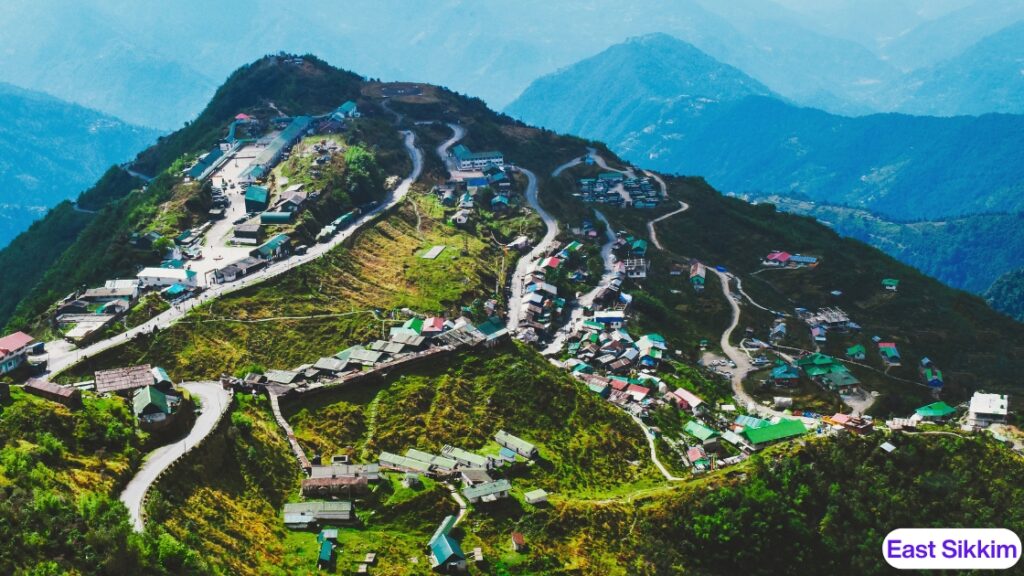
East Sikkim is one of the four administrative districts of the Indian state of Sikkim. Geographically, East Sikkim is spread over the southeast corner of the state. The capital of East Sikkim is Gangtok, which is also the capital of the state. It is the center of all administrative activities in the state.
The civil sector is administered by a district collector appointed by the central government and the military sector is administered by a major general. As of 2011, it is the most populous of the four districts of Sikkim. East Sikkim was part of the state of Sikkim for most of its history. In the 19th century, the district was under Bhutanese rule.
After the Anglo-Bhutan War, the area was virtually under the control of British forces. After India’s independence in 1947, the region was part of the state of Sikkim under India’s protection. During the Sino-Indian War of 1962, there were some skirmishes between India and China at the Nathula Pass. In 1975, Sikkim formally became a part of the Indian Union as the 22nd state of India.
Gangtok is the capital and largest city of the Indian state Sikkim. Gangtok is located at an altitude of 5,800 feet (1,800 m) in the eastern Himalayan range. Gangtok is located at 27.33 ° N 88.62 ° E. Besides being the capital of the state, it is the headquarters of East Sikkim district. The city’s population of 98,658 belongs to various castes such as Indo-Nepalese, Lepchas, and Bhutias, which is administered by the “Gangtok Municipal Corporation.
“Situated within the high peaks of the Himalayas and enjoying a mild temperate climate throughout the year, Gangtok is at the heart of Sikkim’s tourism industry. Gangtok rose to prominence as a popular Buddhist pilgrimage site after the construction of Anche Monastery in 1840. In 1894, the ruling Chogyal of Sikkim, Thutub Namgyal, moved the capital to Gangtok.
In the early 20th century, Gangtok became a major stop on the trade route between cities such as Lhasa in Tibet and Kolkata (then Calcutta) in British India. After India gained its independence from Britain in 1947, Sikkim decided to remain an independent monarchy, with Gangtok as its capital. In 1975, after integration with the Union of India, Gangtok was made the twenty-second state capital of India.
The exact meaning of the name Gangtok is not clear, although the most popular meaning is “hilltop.”Today, Gangtok is a center of Tibetan Buddhist culture and education, with many monasteries, religious educational institutions, and centers for Tibetology. Gangtok has a monsoon-influenced subtropical highland climate. Due to its altitude and sheltered environment, Gangtok has a mild, temperate climate throughout the year.
Like most Himalayan cities, Gangtok has five seasons: summer, monsoon, autumn, winter and spring. The average maximum temperature ranges from 22 ° C (72 ° F) in summer to 4 ° C (39 ° F) in winter. Summers (lasting from late April to June) are mild, with maximum temperatures rarely exceeding 25 ° C (77 ° F). The monsoon season from June to September brings heavy torrential rains that often cause landslides that block Gangtok’s land access to the rest of the country.
Rainfall begins to increase from pre-monsoon in May, and peaks during the monsoon, with the highest monthly average of 649.6 mm (25.6 in) recorded in July.[16] The average temperature in winter is between 4 ° C (39 ° F) and 7 ° C (45 ° F). Snowfall is rare, and in recent times Gangtok has only received snowfall in 1990,2004,2005 and January 2011.[15] Temperatures below freezing are also rare.
The weather during this season can be unstable and can change abruptly from bright sunshine and clear skies to heavy rain within a few hours. The weather during spring and autumn is usually sunny and mild. Due to its altitude, Gangtok is often surrounded by fog during the monsoon and winter months.
Best Places to Visit in East Sikkim for Travelers
Enchey Monastery

An important site of the Nyingmapa is Enchey Monastery, Enchey Monastery is built on a site blessed by Lama Druptob Karpo, a tantric master known for his power of flying. The 200-year-old monastery complex has images of gods and goddesses and other religious items. Every year around January ‘Chaam’ or religious masked dances are performed here with great fanfare for two days.
Directorate of Handicrafts and Handlooms

Directorate of Handicrafts and Handlooms with the objective of promoting and keeping alive the traditional art and craft of the state, DHH is a repository of hand-woven woollen carpets with traditional motifs, blankets, shawls and exquisitely carved ‘chokatse’ or tables and many other gift items. Travel Time: From Monday to Saturday, the Sale Emporium is open all year round.
Tashi View Point
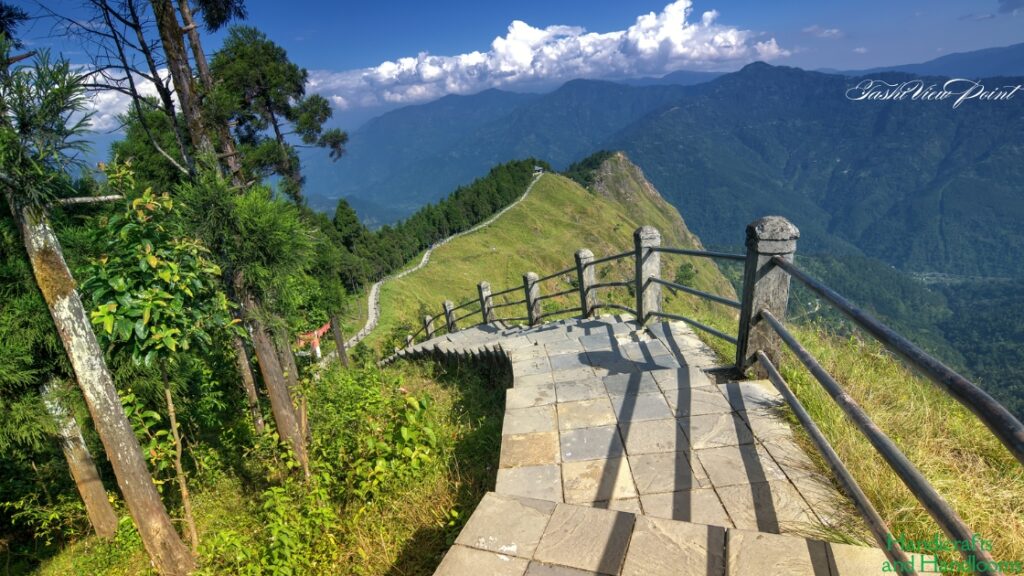
It is about 8 km from Gangtok, from where one gets a breathtaking view of Mt.Khang-chen-Dzonga, one of the most beautiful peaks in the world. Sikkim is considered one of the most popular photography destinations in the Himalayas.
From here, the monasteries at Phodong and Labrang can also be seen. An observatory tower has recently been installed. Tourists can take advantage of the facilities provided by a small but well-stocked cafeteria located here.
Bakhthang Waterfall

A 20-minute drive from Gangtok is the Bakhtang Falls along the 31A National Highway leading to North Sikkim. It originates from Rete Chu, the main water source of the Gangtok region. Recommended to go to rest and take pictures.
Baba Harbhajan Singh Memorial Temple

Built-in the memory of Sepoy Harbhajan Singh of the 23rd Punjab Regiment, the temple is located around the road between Nathula and Jelepla Pass and is visited by hundreds of people every day.
The temple is believed to have the power to grant wishes and many devotees leave water bottles in the temple which they pick up on their way back as holy water. On Sundays, a langar is run in the temple which provides free food to the guests.
Namgyal Institute of Tibetology

Namgyal Institute of Tibetology, the world’s largest treasure house of invaluable old Tibetan books and manuscripts on Buddhist philosophy and religion, science, medicine, astrology, etc., attracts Buddhist scholars from all over the world. It also has a wide range of Lepcha and Sanskrit manuscripts and ancient ancient texts.
In the attached museum more than 200 idols, old tanks, and some ritual utensils among various items are displayed. Travel upwards to inspect the inventory and restoration of these treasures. Open: 10 a.m. to 4 p.m.
Rumtek Monastery

The 24 km drive from the capital to the Rumtek Monastery is worth the effort in itself. The changing scenery of the mountains stretches at every turn and there are enchanting pictures of the settlements and fields of the people of rural Sikkim.
The original monastery was built by one of the rulers of Sikkim. However, when His Holiness the 16th Gyalwa Karmapa left Tibet, he built a new monastery, the Dharma Chakra Centre, which was famously a replica of his former monastery.
Tsomgo Lake
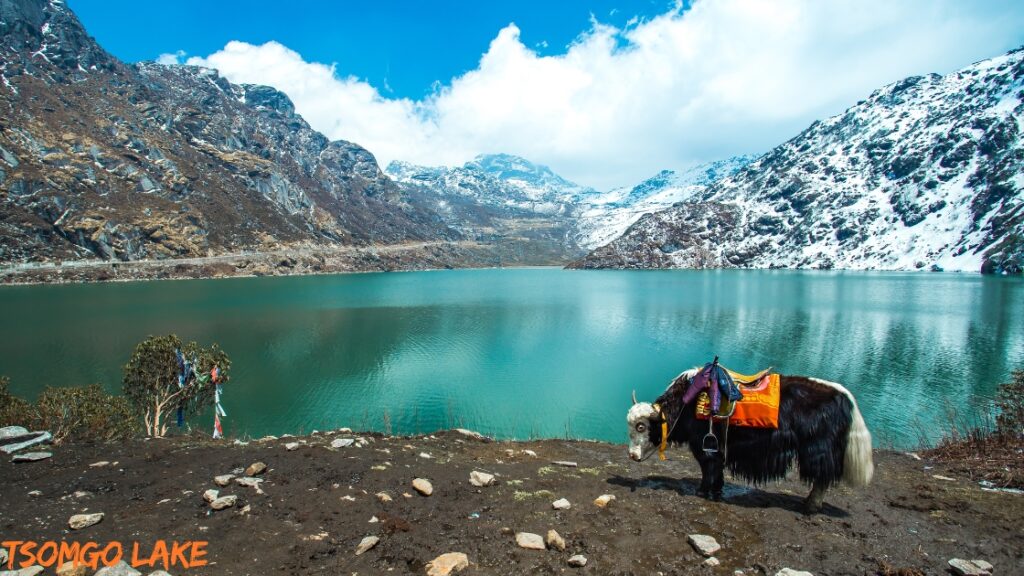
It is located at a distance of 38 km from Gangtok. This calm lake is situated at a height of 3780 metres. This lake is about 1 km long, oval-shaped, 15 meters deep, and is considered sacred by the locals. This serene lake remains frozen during the winter months.
Between May and August, it is possible to see a variety of flowers blooming, including rhododendrons, various species of primula, blue and yellow poppies, lorises, etc. It is open to both Indians and foreigners. Foreign visitors must be in a group of two or more and must apply for a visitor permit through a registered travel agency.
Nathula Pass Sikkim

Nathu La is one of the three open trading border posts between China and India; the other two are Shipkila in Himachal Pradesh and Lipulekh (or Lipulekh) in Uttarakhand. Nathu La, which was sealed by India after the 1962 Sino-Indian war, was reopened in 2006 after several bilateral trade agreements. The opening of the pass was expected to boost the region’s economy and play an important role in growing Sino-Indian trade, but that has not happened.
Ropeway
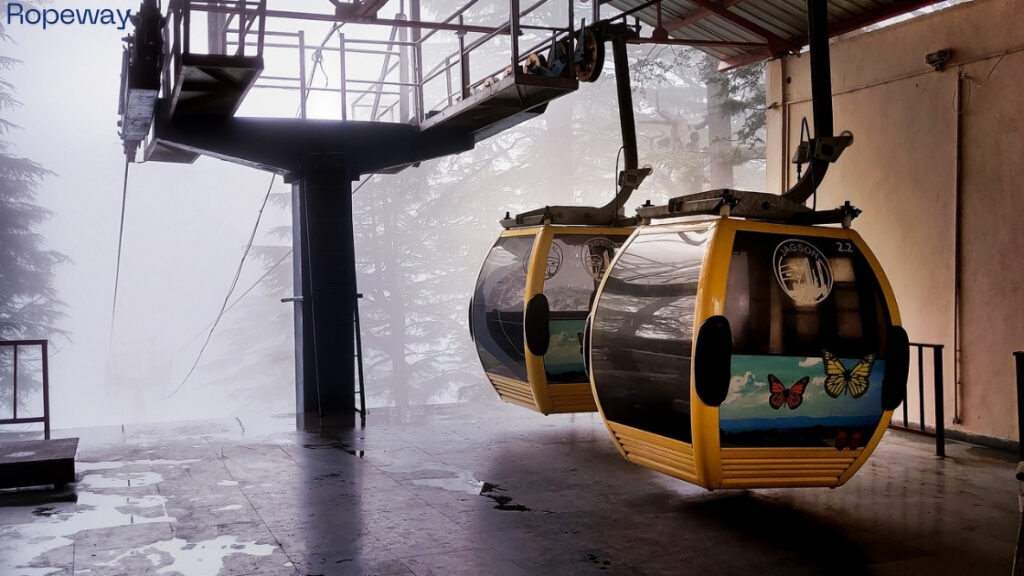
This cable car takes tourists from Deurali to the Tashiling Secretariat via Hurray Dara near the Sikkim Legislative Assembly. Apart from the thrill of the ride, one can also enjoy breathtaking aerial views of the Gangtok hills.
Banjhakari Waterfalls

Located on the way to Ranka and 4 km from Gangtok, Ban Jhakri Falls Energy Park is set amidst a lush green valley spread over two acres, surrounded by trees and a flowing mountain river. The park has a shamanistic theme. So, while the location of the garden entering the forest seeks to enhance the essence of the secret and the unknown, the place itself is filled with ethnic sculptures and figurines of the Jhakri culture.
Hanuman Tok
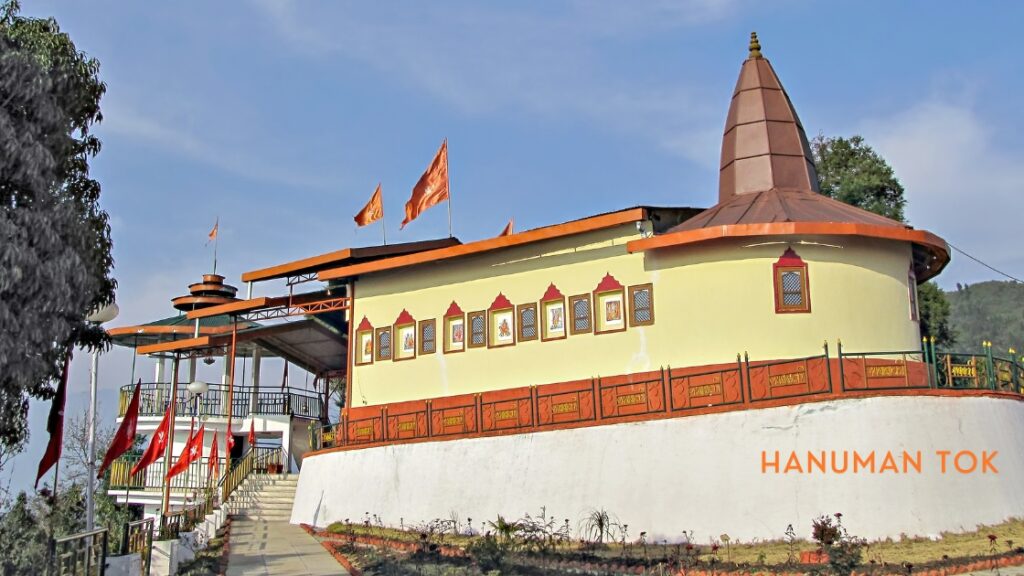
Hanuman Tok is a Hindu temple complex located in the upper reaches of Gangtok, the capital of the Indian state of Sikkim. This temple is dedicated to Lord Hanuman. The temple is maintained by the Indian Army. According to local legends, when Hanuman was flying along the “Sanjeevani” (mythical life-saving herb) mountain to rescue Rama’s brother Lakshmana, he rested at the place where his temple is now located for some time.
Ganesh Tok

It is located on a ridge at a distance of 7 km from Gangtok. From this place, a panoramic view of Gangtok city spread across the hills can be seen. Khang-Chen-Zhonga and Mt. Siniolchu loom above the horizon. Complimentary coffee, tea, and hot chocolate are served in the cafeteria.
The view from here is truly breathtaking with snow peaks providing the perfect backdrop for a panoramic view of Gangtok town. This temple, which is dedicated to Lord Ganesha, is located at a height of 6500 feet on top of a picturesque hill.
Complex of flowers

Flower exhibitions are held throughout the year at the flower show site near the White Memorial Hall complex in Gangtok. The Orchid Show held during the spring season is one of the most popular shows held in the state.
West Sikkim

Gyalshing or Gejing (Nepali:) is the capital of the West Sikkim district in Sikkim, India. The city is connected to the capital Gangtok by a metalled road. Geyzing is also connected to Darjeeling and Kalimpong towns of West Bengal via Jorethang. A few kilometers to the north is the town of Pelling. The city has a large Nepalese population, and the Nepali language is the predominant language in the area.
The city is located at an altitude of about 6,500 feet (1,900 m). The city has a temperate climate for most of the year and snow sometimes falls in the surrounding area. Near Gejing is the ancient city of Yuksom, the ancient capital of Sikkim, which was built in 1642. Other attractions include the Pemyangtse Monastery built in 1640, which is considered to be the oldest in Sikkim, and the Khecheopalri Lake, which according to legend is not allowed to float a single leaf on the surface.
The city is the base for trekking in the Himalayas and professional expeditions to Mount Kanchenjunga. Geyzing has a few English-medium schools, including a convent school and a major hospital. It also has the district’s only three-star hotel, The Tashigang Hotel, owned by Bollywood actor Danny Denzongpa. Gyalshing is located at 27.28 ° N 88.27 ° E. It has an average elevation of 823 meters (2700 feet).
Best Places to Visit in West Sikkim for Travelers
Tashiding Monastery

Tashiding Monastery is a Buddhist monastery of the Nyingma sect of Tibetan Buddhism in West Sikkim, northeastern India.
It is located at the top of a rising hill between Rathong Chu and the Rangit River, 40 kilometers (25 miles) from Gyalshing and 19 kilometers (12 miles) southeast of Yuksam, meaning Yuk-Lama, Sam-Three in the Lepcha language which signifies the meeting place of the three holy Lamas from Tibet in 1641 A.D.
The nearest town to Tashiding Monastery (Gompa) is Tashiding which is the most sacred and sacred monastery in Sikkim.
Yuksom
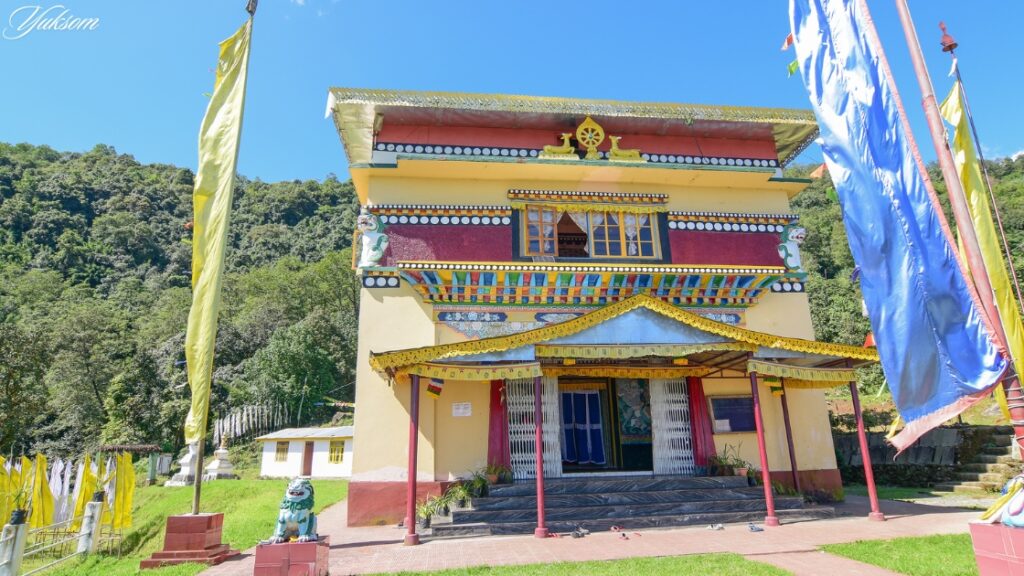
The first capital of the kingdom of Sikkim and the site of the coronation of the first Chogyal. Evidence of the enthronement ceremony can still be seen in the form of stone pedestals and the footprint of the head lama on a stone.
The stone throne built for the great event stands today in Norbugang and has been declared a heritage site. Dubbi Monastery (1701), located on a hilltop above Yuksom, is the first monastery established after the consecration of the first Chogyal. Surrounded by lush green forests, it is an ideal place for lamas seeking meditation and solitude.
Khecheopalri Lake

Khecheopalri Lake, originally known as Kha-Chot-Palri (meaning the paradise of Padmasambhava) is a sacred lake for both Buddhists and Hindus, considered a wish-fulfilling lake. It is located near Khecheopalri village, 147 kilometers (91 mi) west of Gangtok and 34 kilometers (21 mi) northwest of Pelling town in West Sikkim district in the northeastern Indian state of Sikkim.
The local name of the lake is Sho Dzo Sho, which means “Oh lady, sit here.” The popular name of the lake, given its location, is Khechopalri Lake, which is located in the middle of the Khechoidpaladri Hill, which is also considered a sacred hill.
Paling
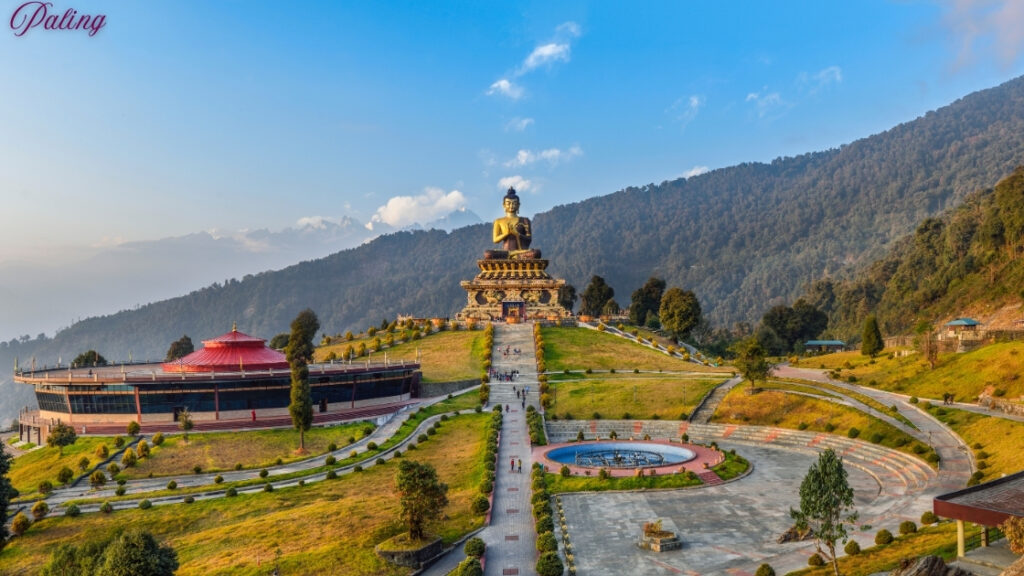
About 10 km from Gyalshing, Pelling is today emerging as the second largest tourist destination in the state after Gangtok. Although in itself it is little more than a strip of road lined with hotels, its main USP is that it offers breathtaking views of Khangchendzonga and the surrounding ranges, as well as providing easy access to the region’s tourist sites.
Barsi Rhododendron Sanctuary

The Barsi Rhododendron Sanctuary (or Barsi Rhododendron Sanctuary) is located in western Sikkim in the Singalila Range which forms a natural border with Nepal to the west. The sanctuary borders the Rambong Khola stream in the state of West Bengal to Sikkim in the south.
The entire sanctuary is spread over 104 sq km in the Singalila ranges. Versi Sanctuary can be reached from three places, Hilli, Dentam, and Soreng. The most popular entry is Hili as it is accessible by road and is only a 4 km walk from this point through a beautifully laid gravel path shaded by various species of versicolored rhododendron.
Rabdentse Ruins
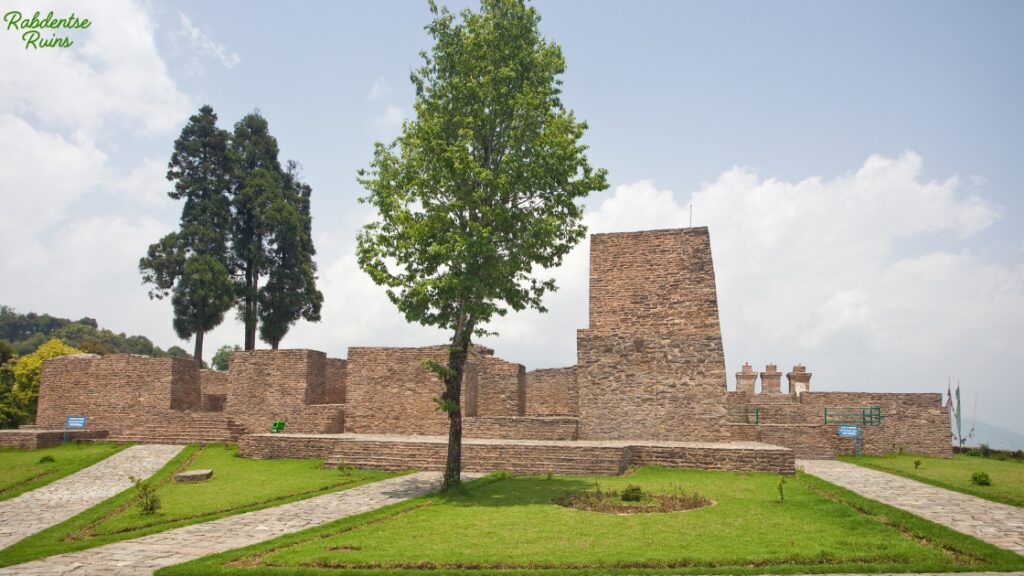
Rabdentse was the second capital of the former kingdom of Sikkim from 1670 to 1814. The capital city was destroyed by the invading Nepalese army and now only the ruins of the palace and chartan are visible here. However, the ruins of this city are seen near Pelling and in the West Sikkim district of the northeastern Indian state of present-day Sikkim.
Pemayangtse Monastery

The Buddhist monastery known as Pemayangtse Monastery is situated 140 kilometers (87 miles) west of Gangtok in the northern Indian state of Sikkim, close to Pelling. Planned, designed, and established by Lama Lhatsan Chempo in 1705, it is one of the oldest and most prominent monasteries in Sikkim. It is not only one of the oldest monasteries in Sikkim but also the most famous in West Sikkim.
Shiva Temple

Also known as Kirateshwar Mahadev Temple, it is located on the banks of the beautiful Rangit River. A foot-hanging bridge takes the devotees to its attractive location. People from all over the state come to this holy place. According to popular belief, anyone who worships here will earn two-lifetime virtues.
Khangchendzonga Waterfalls

After an hour and a half drive from Pelling, Khangchendzonga comes across the Twin Water Falls. On the way to Yuksom, it is a place not to be missed by tourists for the breathtaking beauty of the wild stream of water flowing down from the granite rocks. It is a wonderful sight and most visitors are amazed to see this great symbiosis of sound and sight.
Sanga-Choling-Math

Sanga Chöling Monastery, also known as Sangeet Chöling Monastery, founded by Lama Lhatsan Chempo in the 17th century, is one of the oldest monasteries in the northeastern Indian state of Sikkim. The literal meaning of Sanga Chauling is “island of esoteric learning.”
The monastery is located on a ridge top above Peeling, 7 kilometers (4.3 mi) from Pemayangtse Monastery, and is accessed by walking on a 4-kilometer (2.5 mi) steep mountain track that passes through rich forest cover.
Phamrong Waterfalls

Situated between Yuksom and Gerthang, this highest waterfall in West Sikkim presents a spectacular landscape, especially during the monsoons. A gently sloping footpath leads up to an approach for a close-up view of this powerful discharge of water. A cafeteria is being built for the benefit of tourists and picnickers.
Kongri Labdang

Around Tashiding there are other attractions such as the Sinan Monastery, Tso-Nim Dawa (Pokhri Danra) Hungarian Monastery, and Pao-Hungary. On the way to Kongri, the Pah Khola waterfall is worth seeing.
The bark of the wild bean beside the waterfall makes the journey more attractive. It is also an important point for trekkers visiting Kastura Orar adjacent to the Khang-Chen-Zonga (Dzongri) trail. One can also go to Jhang Lahari Ningpo, one of the most sacred caves of Sikkim, from Labdang.
dentam
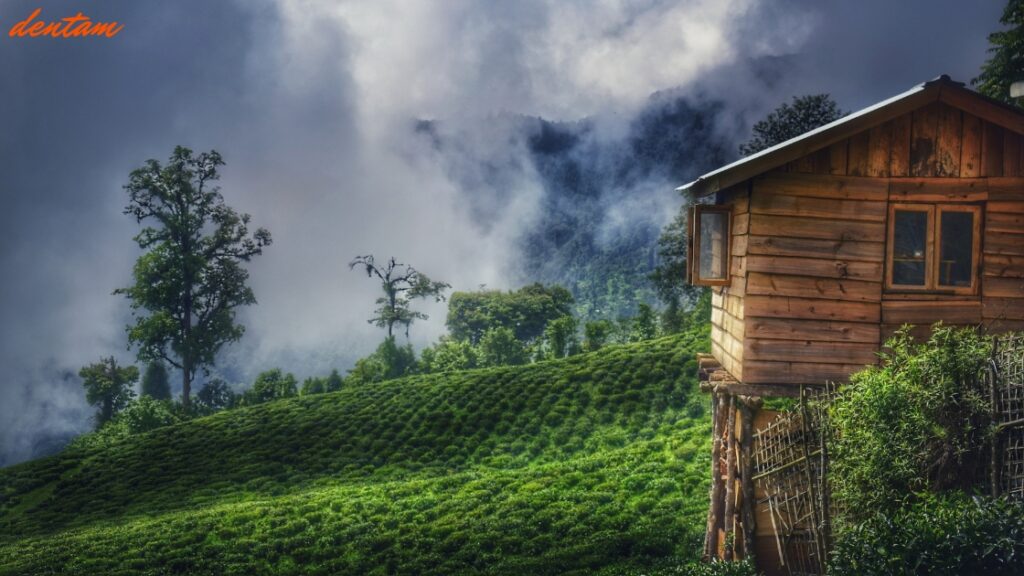
It is the charming village of Dentam, about an hour’s drive from Bermyok. It is famous for the Alpine Gouda cheese factory, a product of Indo-Swiss cooperation.
Singhshore Bridge, Uttaray

The Singshor Bridge is the highest bridge in Sikkim. This hanging bridge is located near Uttare in West Sikkim district. It is about 25 km from Pemayangtse.
This hanging bridge is a mechanical marvel done by engineers that connects two hills. The view down from the bridge is stunning with views of the beautiful waterfalls. En route is Utare, the camp for visiting the Singalila Range and other mesmerizing peaks and places.
Durga Temple, Uttaray

This sample is located in Utare near the proposed artificial lake. This sample has been constructed with the great effort of the family of Shri P.L. Gurung and some other people, who are the citizens of that place. This temple adds beauty to this valley and develops the spiritual growth of the hearts and minds of the people of that region. The temple needs institutional toilets and other facilities.
North Sikkim
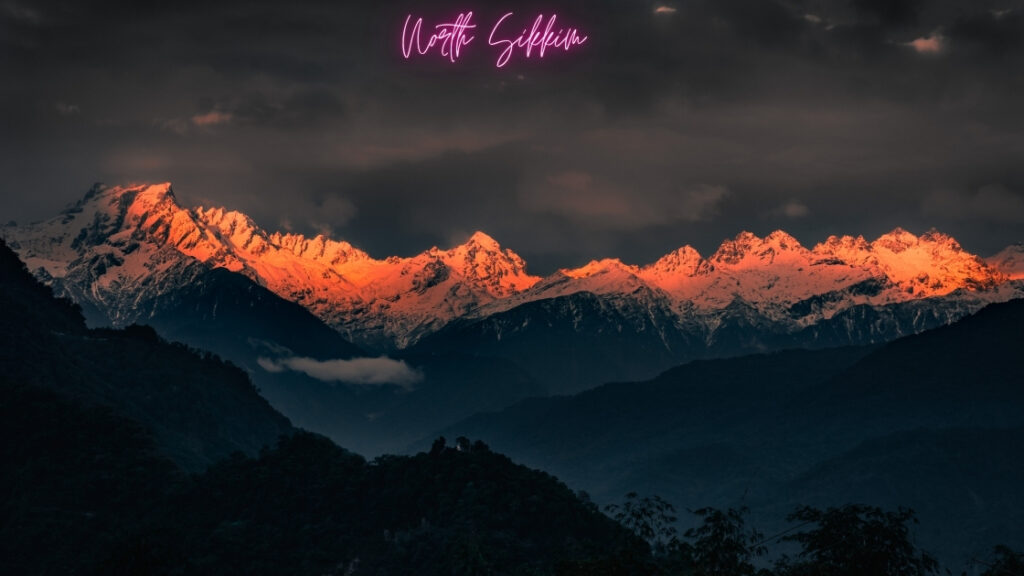
It is the largest of the four districts of Sikkim. The landscape is hilly with dense vegetation up to alpine heights before thinning into desert scrub towards the northern tundra. There are many waterfalls on the main road that make the visit to this district extremely picturesque.
The most prominent effect of the steep slope of the valleys is the prevalence of landslides that sometimes rise to anything between 3,000 and 5,000 feet (1,500 meters) bringing devastation along their course.
Most of these are either due to the melting of snow on the top of the mountains or due to the erosive action of rain. Most people in the state live near the district headquarters Mangan, which is about 2,000 feet (610 m) above sea level. Further north the elevation increases as the vegetation changes from temperate to alpine tundra.
Temperatures range from around 25 degrees to below -40 degrees in extreme high-altitude areas where the altitude exceeds 6,000 meters. Kanchenjunga is the highest peak at over 8,000 meters, straddling its eastern border with Nepal, and can be clearly seen from the town of Singhik.
Best Places to Visit in North Sikkim for Travelers
Gurudongmar Lake

Situated at an altitude of 17,800 feet, it is considered one of the most sacred lakes by Buddhists and Hindus alike. The beautiful and amazing lake (190 km from Gangtok) remains milky throughout the year.
According to a legend, since the lake was frozen most of the year, it was not possible to use its water for drinking purposes. When Guru Padmasambhava passed by on his way back from Tibet, local residents approached him to provide a source of water.
Yamthang
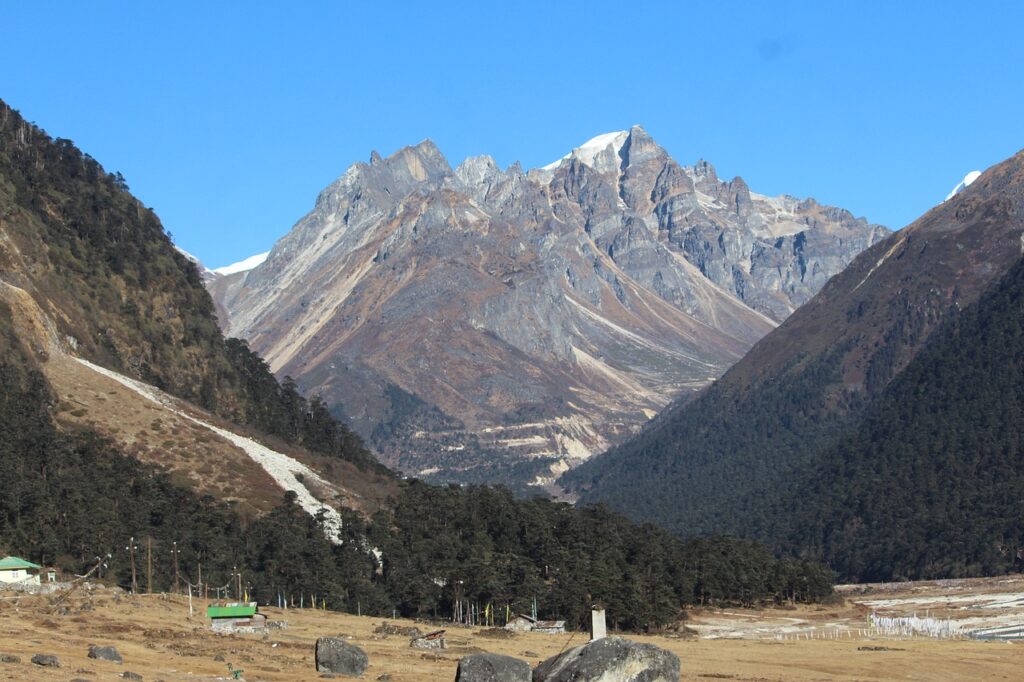
It is located at an altitude of about 11,800 feet. Yamthang Valley is a grazing pasture surrounded by Himalayan mountains in the North Sikkim district of the Indian state of Sikkim. It is located at an altitude of 3,575 meters above sea level, at a distance of 150 km from the state capital Gangtok.
Lachung
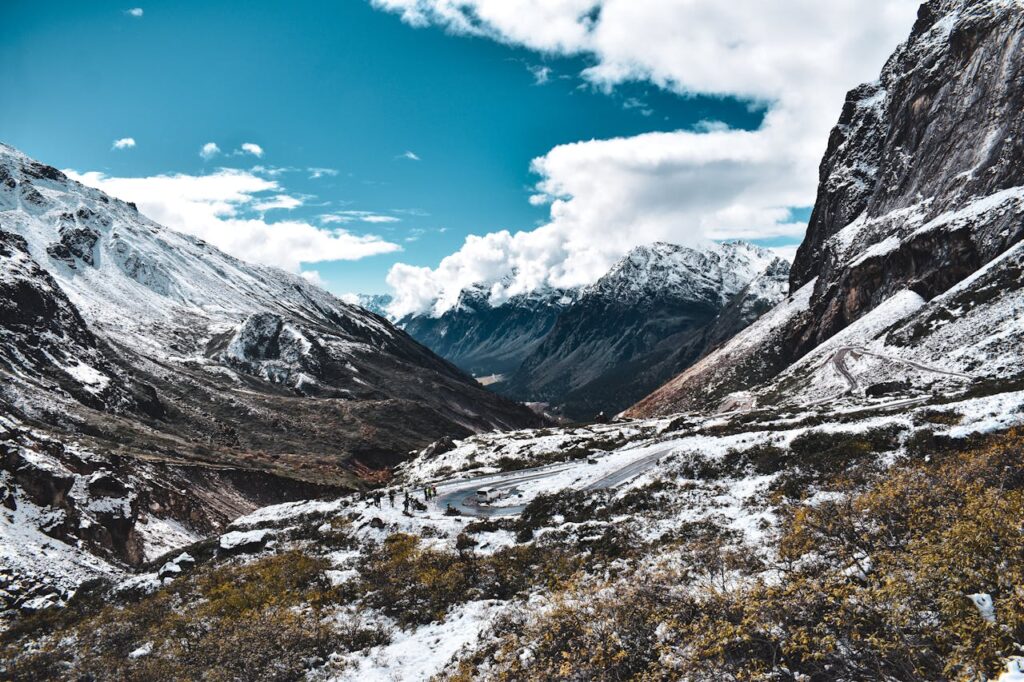
Lachung is located in North Sikkim district and is near the border with China. Lachung is at an altitude of about 9,600 feet or 3,000 meters and at the confluence of the Lachin River and Lachung River, tributaries of the Teesta River. The word Lachung means “small pass.” This city is about 125 km away from the capital Gangtok.
Lachen
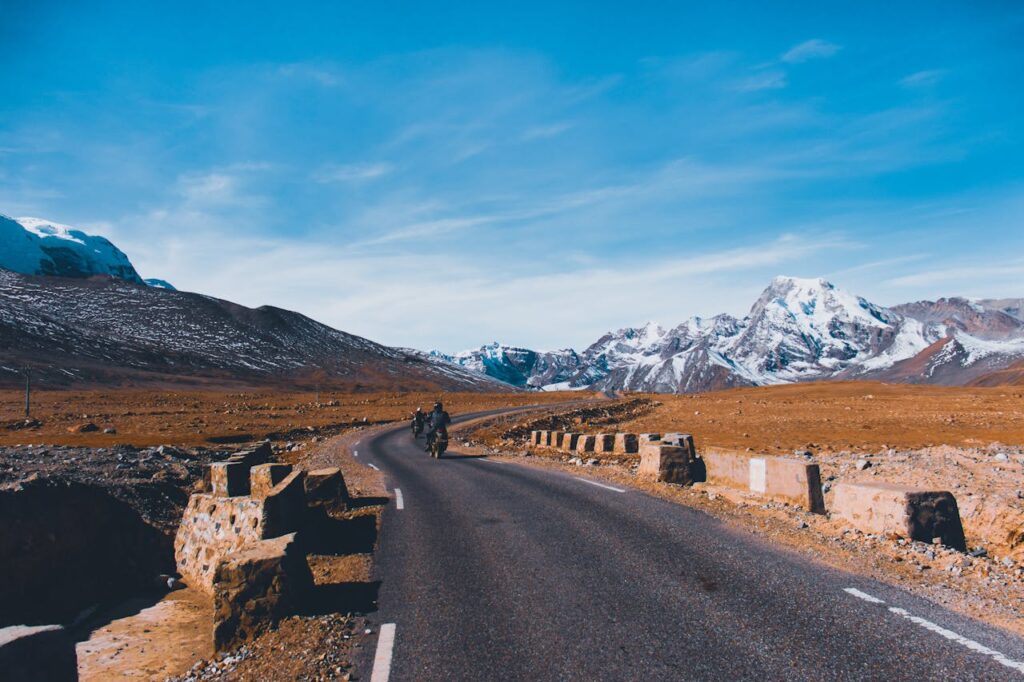
Lachen which means’ big pass’ is located at an altitude of about 2 hours drive from Lachung and 6 hours drive from Dongmar Lake. It is a beautiful Lachen village that starts from ‘Denangya’ near Munshithang and ends at Cho Lhamu, the source of the Teesta River.
It dates back to the 16 century. It is believed that Lachen is placed on the chest of the goddess “Dhomai Riyas,” who feeds the village with a perennial source of water that is still visible today.
Phodong Monastery

Phodong Monastery (or Phodang) is a Buddhist monastery in Sikkim, India. It is located 28 km from Gangtok. It was built in the early 18th century, but an older monastery already existed. The 9th Karmapa was invited by the king of Sikkim, where he founded the three monasteries Rumtek, the most important monastery of the Kagyu sect of Tibetan Buddhism, Phodong and Ralang Monastery.
Thangu

Situated at an altitude of 13,500 feet, Thangu is about a two-hour drive from Lachen. It is a small village where visitors usually acclimatize before proceeding towards Guru-Dongmar Lake, Muguthang or Cho Lhamu (the source of the Teesta River). A tourist guest house in Chopta Valley has recently been constructed overlooking Thangu.
Seven Sisters Waterfalls

It is located 32 km from Gangtok on the National Highway leading to North Sikkim. To facilitate tourists to enjoy the pristine beauty and be with nature, the Tourism Department has set up a waiting shed and cafeteria where they can take a break and take pictures. A picture of the beauty of nature must be seen.
Kabi Lungchok
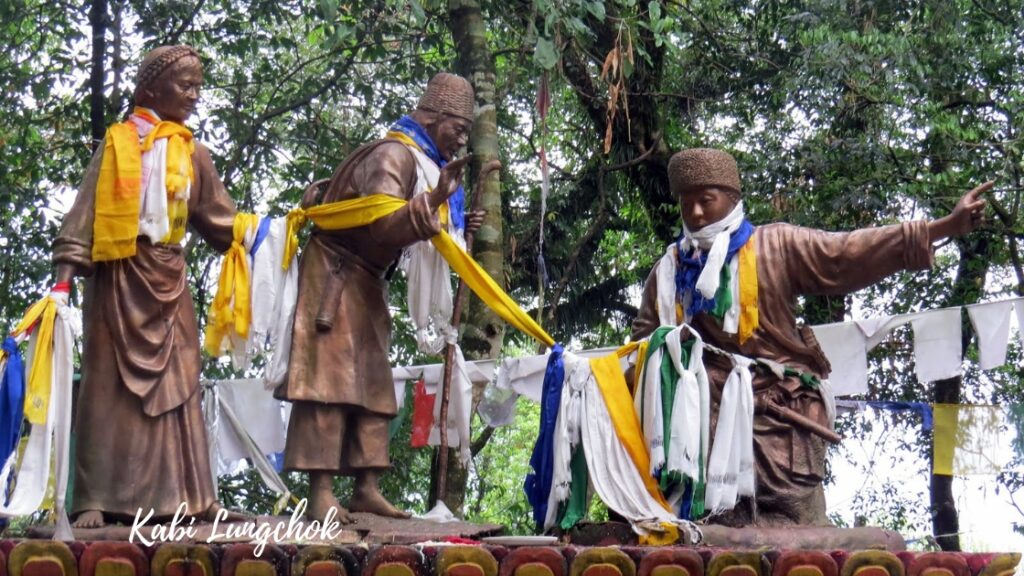
Kabi Langchok is an important historical site located 17 kilometers (11 mi) north of Gangtok on the Northern Highway in the northeastern Indian state of Sikkim. The historicity of the site is attributed to the fact that there are ethnic tribes of Lepchas, Sikkimese, and Bhutias.
The literal meaning of ‘Kabi Lungchok’, pronounced ‘Kayu Sha Bhi Lungchok’, is “The stone standing by our blood The life-size statues of the Lepcha and Bhutia ‘blood-brothers’ who signed the treaty have been erected here.
Phensang Monastery

Phensang Monastery is a Buddhist monastery of the Nyingmapa is 9 km from North Sikkim. It was established in 1721 during the time of Jigme Pao Phensang, which has about 300 monks, hosts an annual festival on the 28th and 29th days of the tenth month of the Tibetan calendar, when sacred dances are performed two days before the Sikkimese New Year.
Singhik
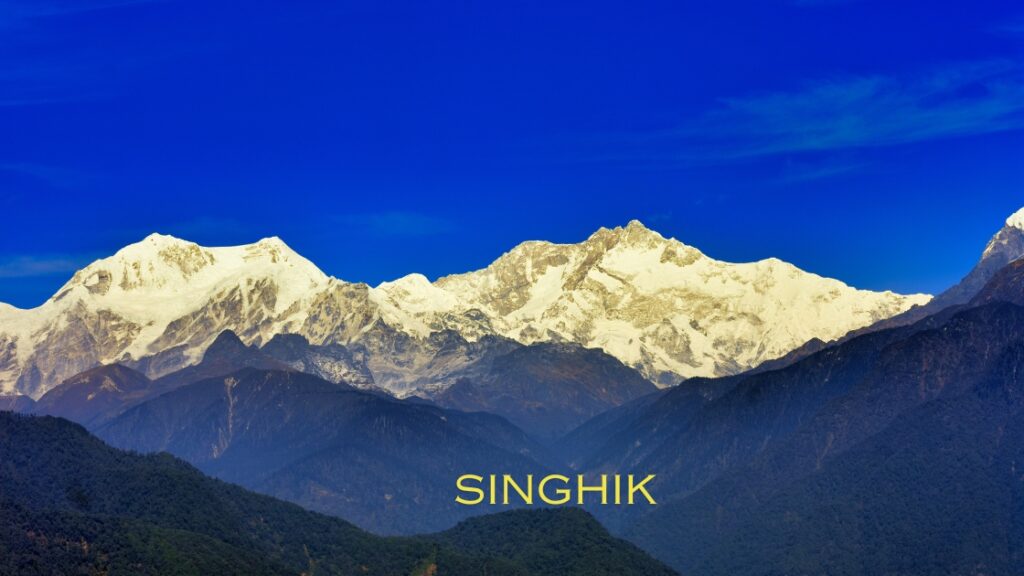
Singhik is a town and a nagar panchayat in North Sikkim district in the Indian state of Sikkim. It is located four kilometers from the district headquarters Mangan. The town offers clear views of Kanchenjunga and Siniolchu. A well-located tourist lodge provides accommodation for visitors.
South Sikkim
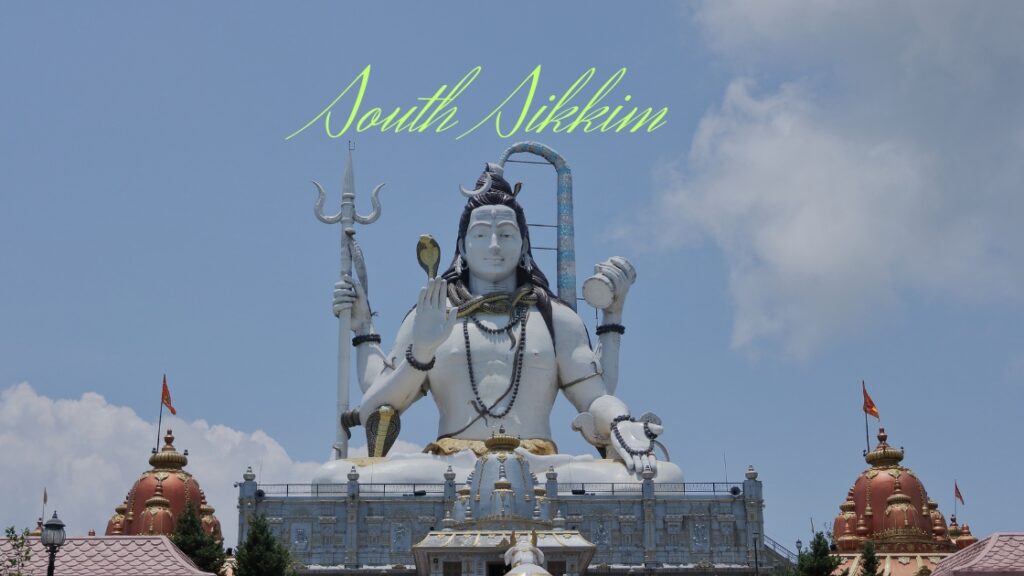
South Sikkim is a district in the Indian state of Sikkim. Its capital is Namchi. South Sikkim lies at an altitude of 400 to 2000 metres and therefore enjoys a temperate climate for most of the year. Major urban centers include Namchi, Rawangla, Jorethang Bazar, and Melli.
Best Places to Visit in South Sikkim for Travelers
Namchi
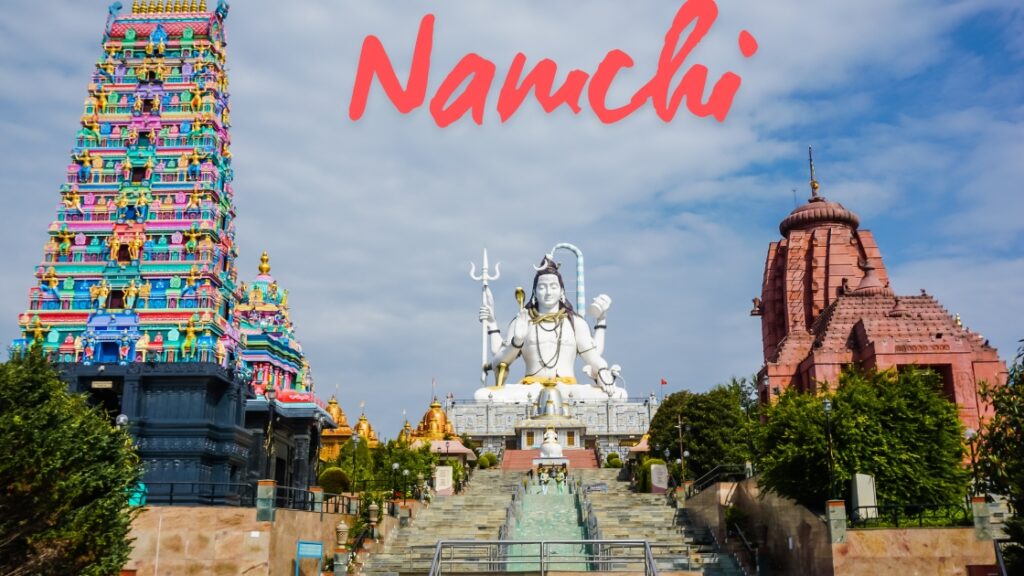
Namchi is situated at a height of 1,675 meters (5500 ft) above sea level. It is located at a distance of 92 km from the state capital Gangtok. Namchi hosts the very popular Namchi Festival, a tourism, culture, and food festival, every year in October. A flower show is also held annually. Namchi offers unparalleled views of the Khanchendzonga range and the Rangit Valley.
Solophok Char Dham

This place is considered sacred as it is for Hindu pilgrims where poojas and ceremonies are performed. Very soon this place will be considered as one of the ideal places for tourist spots, as this place is coming up with a big idol of Lord Shiva which is equally big as Guru Padmasambhava of Samadraptas hill.
Samadruptes
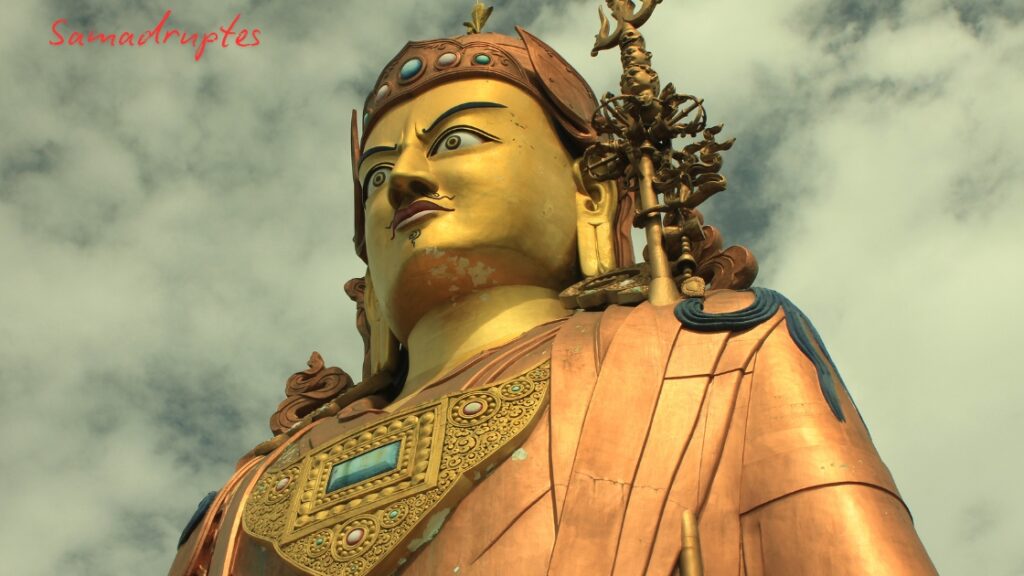
72 km away from Gangtok near Namchi and Sikkim is Samdrups which in Bhutia language means “wish fulfilling hill.” A unique 135-foot statue of Guru Padmasambhava has been installed on the top of the Samadhi. His Holiness the Dalai Lama laid the foundation stone of the statue on 22.10.1997. It is said to be the tallest statue of Guru Padmasambhava in the world.
Sai Temple
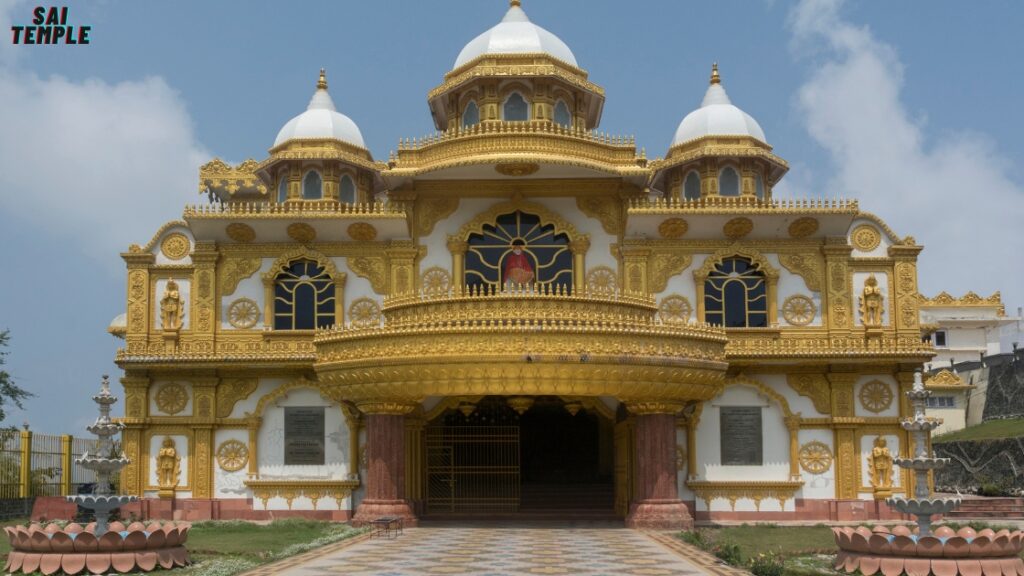
On 3rd November 2010, Sikkim provided a newly constructed grand Shri Shirdi Sai Baba Temple at Asangthang, Namchi in South Sikkim. The holy temple was inaugurated by Chief Minister Dr. Pawan Chamling and his wife Smt. Teeka Maya Chamling. The day-long programme began with the lighting of the lamp by the chief guest.
Also, on this occasion, the statue of Shri Shirdi Sai Baba was unveiled and made for public worship after chanting holy mantras. This was followed by a documentary film on “Shri Shirdi Sai Baba – Pilgrimage.” During the program, devotional programs were also organized by Child Development Satya Sai Organization Sikkim.
Temi Tea Estate
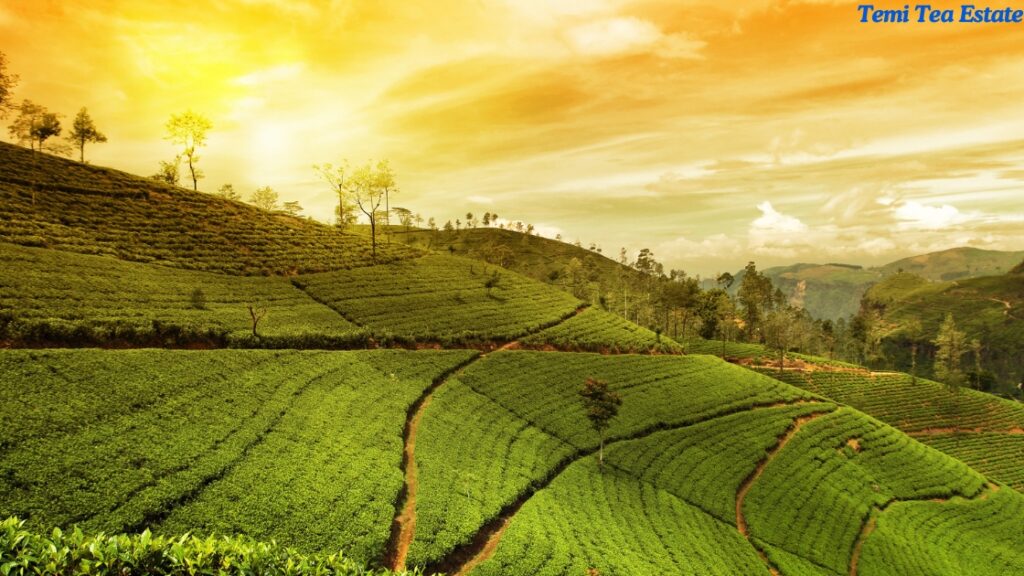
Temi Tea Garden 27.2367 ° N 88.4222 ° E Rawangla, established in 1969 by the Government of Sikkim, is located in South Sikkim in the northeastern Indian state of Sikkim. It is the only tea estate in Sikkim and is considered one of the best in India and the world.
High-quality tea is produced, which is in demand in the international market. The park is located on a gently sloping hillside. The tea produced in this garden is also partially marketed under the trade name “Temi Tea.”
Rock Garden

A few kilometers from the city on the way to Samdrupts is the Rock Garden. The rock garden exhibits a variety of flora and is a local recreation and picnic spot. It offers a magnificent view of the mountain. Kanchenjunga (aka Mt. Kanchenjunga, the third-highest peak in the world)
The Ravangla Buddha Park

Rawangla or Ravangla is a small tourist town located at an altitude of 7000 feet in the South District of Sikkim state. It is connected to other major cities of the state by a state highway and lies between Pelling and Gangtok.
Transit points to beautiful places like Chojo Lake, Ralong Monastery, and various tourist spots. Descending the holy cave ‘Shar Chok Bhepu’, one of the four most sacred caves of Sikkim, will be a memorable experience. Recently many tourist facilities have been provided at the Sang Moo Monastery and Cave located near Ravangla.
Kirateshwar Mahadev Temple

Kirateshwar Mahadev Temple is a Hindu temple, identified as a Hindu pilgrimage site. A long time ago people miraculously found a stone revealing the Shivlinga. The main object of worship is the Shiva Linga. Many believe that only a visit with true devotion to this temple fulfills one’s desires, especially the desire of a son or daughter, and also wishes for peace harmony, and good health.
Once a year on the occasion of Hindu Shiv Ratri, the locals of Legship organize a festival which falls in December-January. Belonging to the Ralong monastic Kagyu order, it was built after the return of the fourth Chogyal from a pilgrimage to Tibet. H.H. Gyalwa Karmapa performed Rabani (blessing on its completion from Surphu itself), and the grain from this ceremony fell to the ground at Ralong.
Between 1975-81 A.D. the government rebuilt the monastery which today has about 100 monks. The major celebrations fall on the 28th and 29th days of the tenth month of the lunar calendar when ‘Chams’ are performed.
Tendong Hill
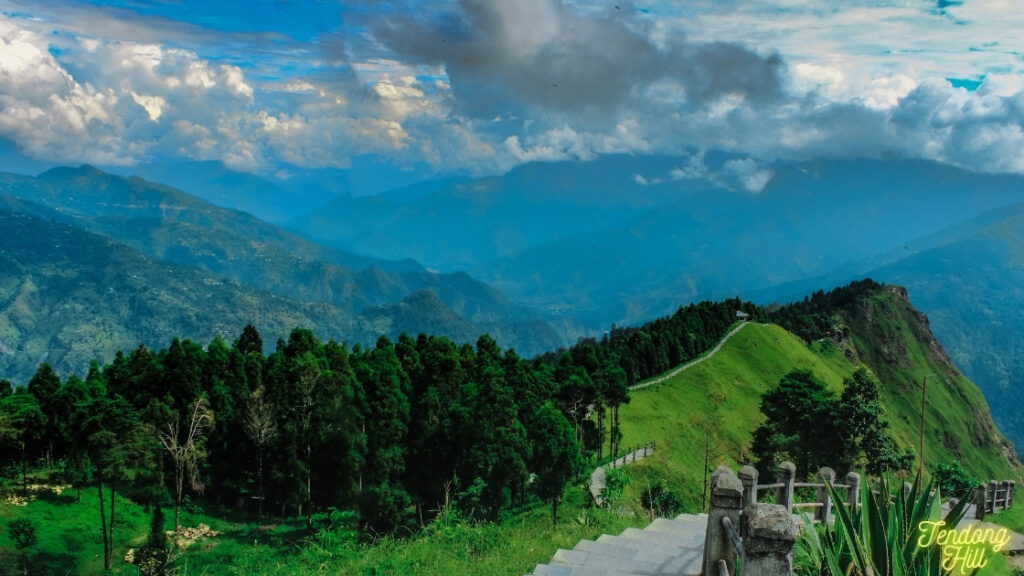
Avob Damthang, overlooking Namchi, is a small flat patch of land at an altitude of 8,530 feet surrounded by a lush green pristine forest known as Tendong Hill. Historically, it has been a resting place for Buddhist lamas who spent years in meditation amidst the serene natural splendor.
The walk from the nearest road head, Damthang Bazar to Tendong is about two hours. One can also proceed to Namchi by trekking through Tendong Hill.
Menam hill
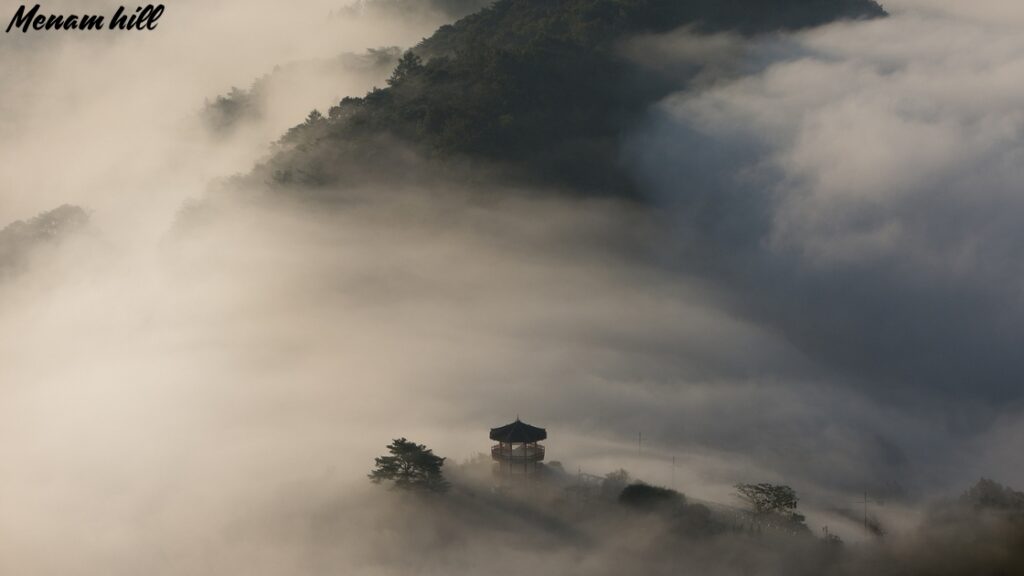
Situated at a height of 10.300 ft, the scenic view from this height is perhaps unmatched in this part of the world. Mt. Khang-Chen-Zhonga and its surrounding ranges rise up to dwarf the rich forests and rugged hills.
On a clear sunny day, it is possible to see the plains of Bengal across the Kalimpong and Darjeeling hills in the south and just across the India-China border in the north. At some distance is the famous Bhale Dunga. A kind of rocky spur that rises from the top of the ridge and hangs in the air above Yangyang village.
How To Reach Sikkim

Right in the East Himalayas, we have Sikkim, which is an untouched gem awaiting its discovery. I can understand why you would be very excited to pay a visit to this beautifully welcoming state, as its cultural diversity and picturesque scenery are captivating. And the real question here is, how does one reach Sikkim? Worry not, I am here for you! Sikkim can be reached in a number of ways and I will tell you how to get there so that you don’t forget this amazing tourism experience.
The Air Route – Soaring to Sikkim
If your aim is to reach Sikkim in as little time as possible, then, flying would be your most feasible option. Here is a guide to everything you will need to know:
Pakyong Airport: Sikkim’s first and only airport which is Hassle-Free from the capital Gangtok.
One of the most recently opened airports in India, which makes it one of the most beautiful (and trust me, the view is beautiful). Currently, SpiceJet is the only airline service in the area, flying from Delhi and Kolkata.
Bagdogra Airport: The older one, located in West Bengal, but more convenient because it is further developed.
Approximately 124 kilometers from the capital city of Gangtok. Easily reachable from all the major cities of India such as Delhi, Mumbai, and Kolkata. IndiGo, Air India, and SpiceJet are among the airlines that operate in these regions.
Tip: Taxis and shared jeeps are available for hire at Bagdogra Airport making it easy to reach Gangtok. The drive may take around four to five hours, but the view on the way is stunning and likely to make the drive pleasant.
All Aboard: Reaching Sikkim by Train
Although Sikkim does not yet have its own railway station, trains are still an option for reaching the area:
New Jalpaiguri (NJP) is the primary train station in the area, located a little further from Sikkim.
This NJP station can be easily accessed by traveling to Siliguri, West Bengal, which is approximately 148 kilometers from Gangtok. Since Siliguri in West Bengal is the closest to Sikkim, many cabs and shared rides are available to go from Siliguri to Sikkim.
Most people see the trip to Gangtok from NJP station as a memory in itself. The journey takes you through beautiful mountain roads, tiny towns, and forested areas, making it picturesque. Always keep your camera on hand.
YOU CAN MAKE A RESERVATION ON THE INDIAN TRAIN FROM THE IRCTC WEBSITE.
Hit the Road: Driving to Sikkim
Those who enjoy going on the road and taking in the scenery will surely love driving across the country to reach Sikkim:
From West Bengal:
You can use NH 10 from Siliguri to take yourself to Gangtok. The view is going to be scenic but it is key to treat the drive as a fun experience and not as a straight drive. Also, the view is guaranteed to be breathtaking.
Sikkim and other northeastern states are well-connected by road. Popular travel routes begin from Darjeeling and Kalimpong. Don’t forget to get an Inner Line Permit as it is a requirement to enter Sikkim. But no need to panic, it is quite simple to obtain at the Rangpo border checkpoint.

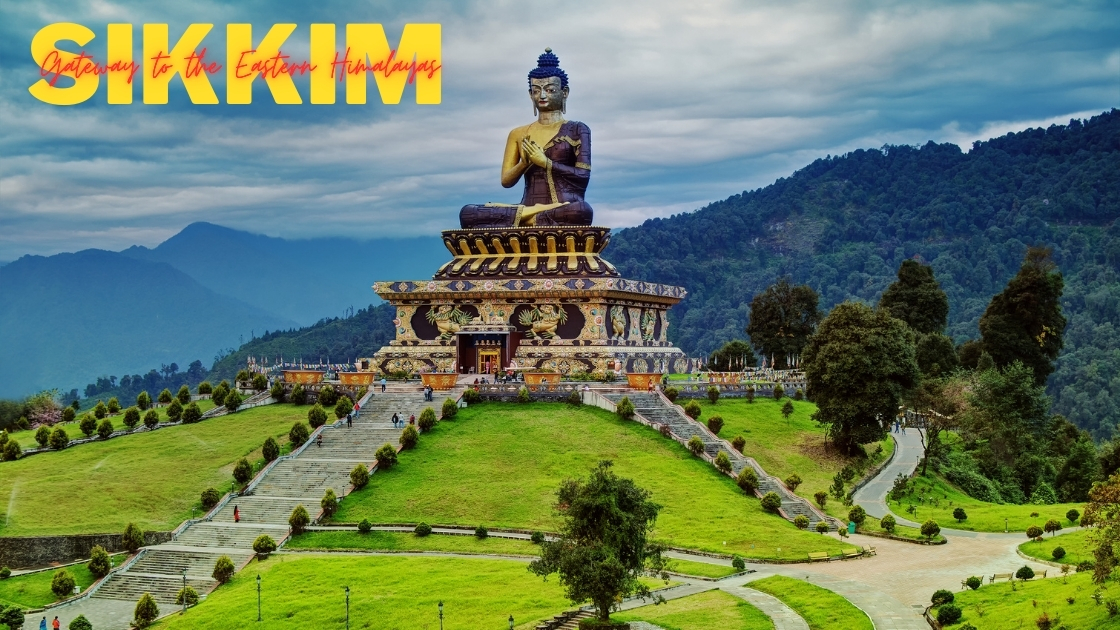

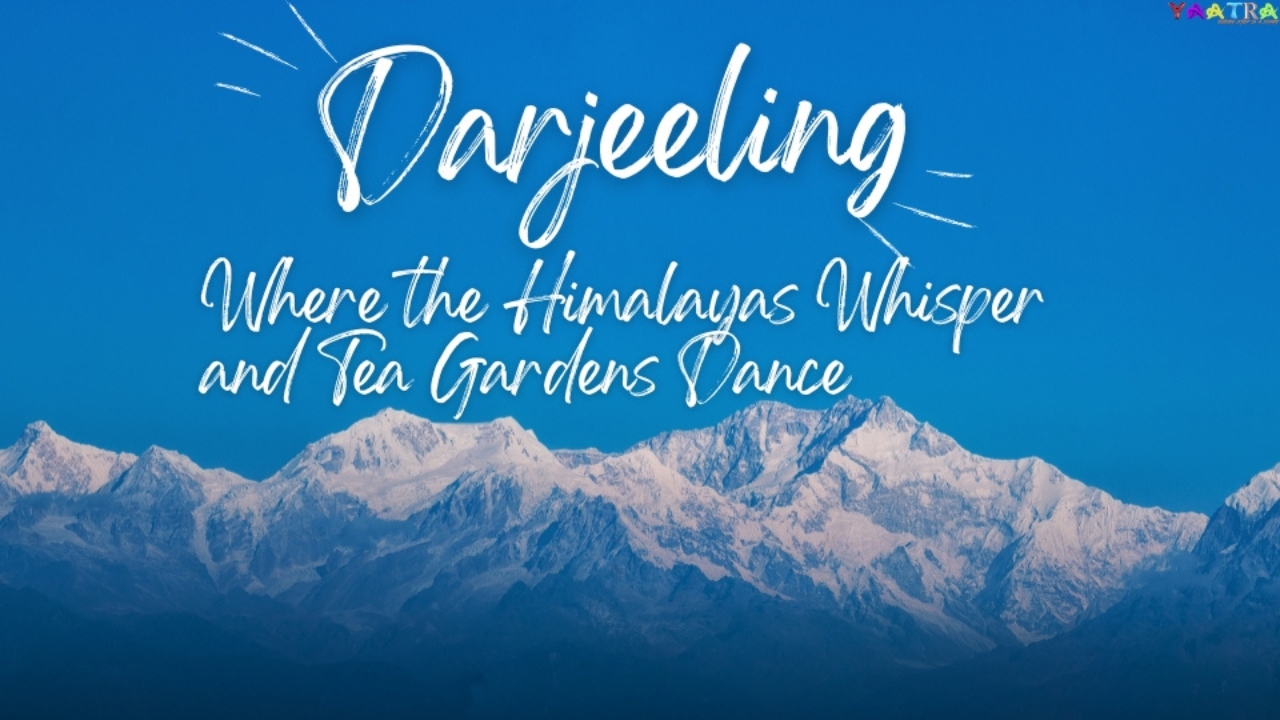
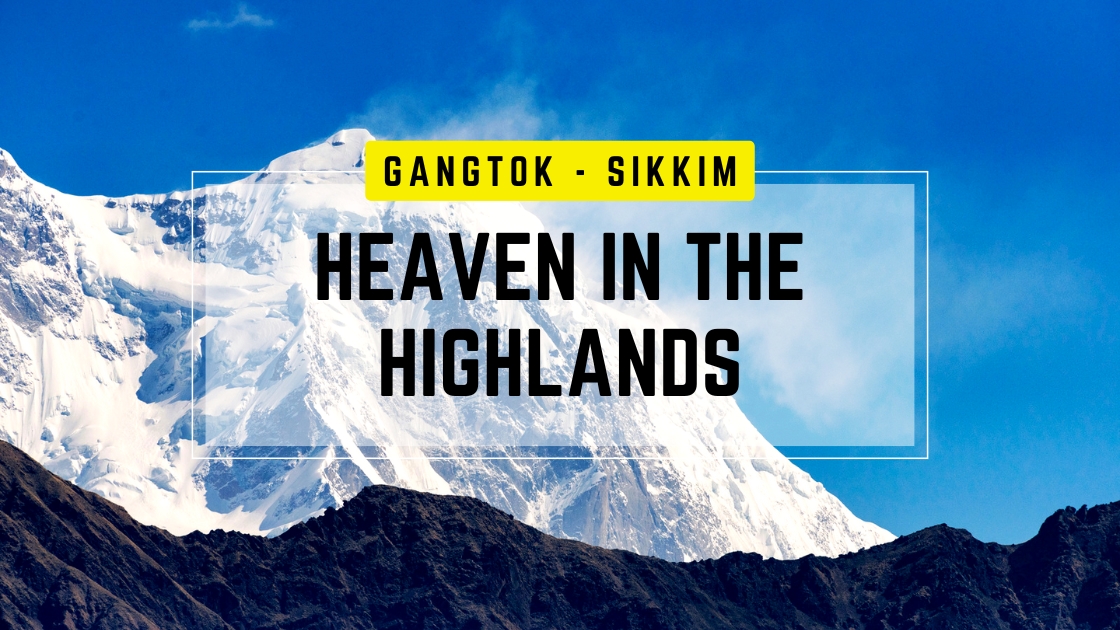




Leave a Reply